There’s a saying developed and propagated in the great state of Virginia that outshines and outperforms any watch or calendar of any make or ability—at least as far as its use in predicting the outset of the plethora of sporting traditions that burst into effect following the spring equinox. It’s a device fashioned of local knowledge by minds weathered and ecologically observant enough to do so, and it’s made truer with each passing year that it rings on time. I’ve had the good fortune to know and be mentored by a few such minds, and each can universally agree on that single, locally significant truth—that turkeys start gobbling, shad start running, and crappie start biting when the dogwood buds grow to the size of a squirrel’s ear.
The latter prediction has proven the most valuable to me. No one that had an active hand in my upbringing turkey hunts—at least not classically, the way they do in the spring with slates and boxes, trading the high-strung hormones of hot-and-heavy gobblers for a handle of adrenaline and a plate full of wild bird. And the shad that invade the tidal rivers to spawn below the Fall Line have evolved to practice their rite just when conventional paper-and-pencil schooling shortens my leash, preventing trips to the tidal portion of the state, many miles east of my base in the foothills.
But the crappie are dense in the farm ponds that pepper the rolling hills of my youth, and it was them we caught first in the year with regularity. The spawning ritual leveled the playing field in my tri-county world, as no car or boat is really needed when near on everyone lives within walking or biking distance of a pond hemmed with the emergent willow grass that the tuxedoed panfish prefer for raising young. The catching of those fish was more an acknowledgement of season and rebirth than a sporting pursuit. Even when we started to acquire boats and cars and could range farther, the fishing seemed better, but the details muddied the water.
One of my mentors and strong philosophical influences is of these hills, too—as much as any thunder chicken, bushytail, or papermouth—and is liable to be one of the original drafters of that useful piece of wisdom. The kind of complete outdoorsman who’s proficient in everything and could do well for himself foraging in the riverbottoms in the case of an agricultural apocalypse, he spent over 30 years earning legendary status as a fishing guide. He devoted a majority of that time to the smallmouth bass on the world-class rivers in our backyard, and would likewise add another credit to the dogwood’s predictive powers.

There is a certain date in the month of April, he maintains, that increasing day length triggers the movement of Blue Ridge bronzebacks into spawning areas. It’s photoperiod—not water temperature—that triggers this movement, he says. And I’m inclined to believe him.
As a barefoot kid, I would walk the high banks along a ledgy section of my home river in early April and keep watch, waiting for the male smallmouth to move in and sweep nests with their tails. They always came, and I learned that the smallmouth from waters downstream would move great distances up my tributary river to spawn, and I caught some of my biggest bass there and then, year after year.
What many folks don’t know about the smallmouth bass is that they aren’t native to many of the Virginian rivers they’ve made a home and name for themselves in, like the James and the Shenandoah and their many tributaries. Much like my kind, it wasn’t until the 1800s—notably late in the history of the Appalachians—that smallmouth came to roam these hills. Admittedly, they didn’t come a long way, just over a mountain, from that part of the state that is drained by the Ohio and Tennesee Rivers. Still, they are transplants, here, but to me, and most any other, they are as natural a neighbor as any.
In recent years, when I traveled to attend school, I’ve gotten to know a few more transplants from a bit further out. Honeysuckle is a Japanese import that also arrived in America in the 1800s—a heartbreaking realization to anyone who grew up in the south, or in any kind of close proximity to the bush. And it’s an aggressive colonizer that doesn’t take no for an answer. It grows anywhere it can, as thick as it can, as most invasive plants do. But without a history book or the tales handed down through the generations of the times before, honeysuckle is just a common plant, a beautiful flower, and a shot of sweet nectar provided by nature—a timeless symbol of southern culture. It’s also phenomenal brown trout cover.

A short drive from my college apartment there runs a small tinker of a creek that bubbles up from a spring deep in public land. You wouldn’t know it during the winter, but its banks are lined with honeysuckle. And in the springtime, when the dogwood buds are about the size of a squirrels ear and the honeysuckle begins to bush out and bloom, the open air above the creek halves at the hands of the green tendrils and a daily caddis hatch erupts. For a few weeks, a stealthy foot and a caddis dry placed upstream to drift along the edge of, or under, the honeysuckle is enough to buy you a wild brown trout, sometimes as long as the creek is wide.
On such a day there’s no convincing me that there’s a finer match than honeysuckle and a wild brown trout, but it’s worth noting that the pair wouldn’t interact if they hadn’t invaded American soil at the hands of humans. Brown trout, of course, are a European export, brought over in the 1800s and widely stocked to supplement a recreation fishery in lieu of the devastated native brook trout population in the early 1900s.
But brown trout are here to stay, as am I and the honeysuckle and the smallmouth. And when I leave this place and return and see my hills again with a clean pair of eyes, I see a gray squirrel climbing lazily from his den hole late in the morning as the warm sun creeps through a hickory grove, and I see a strutting gobbler in a lush valley field, framed by redbud and dogwood and the hazy blue outline of a far-off ridge. I see a native brook trout—fiery fins and river cobble back—and the gold of a brown trout flank hidden in the mountains’ forgotten fisheries. I taste the sweet nectar of honeysuckle and the humidity of summertime in the south, and see the dark profile of a smallmouth exploding from a riverbottom with a poppin’ bug in its mouth. And because I see and understand these things in the hills of my upbringing, I know that I am of them, and that I, and we, belong.




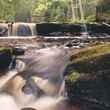
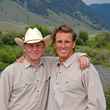

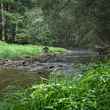
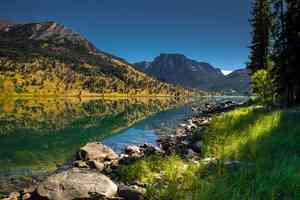


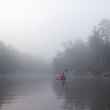




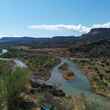




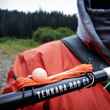
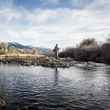





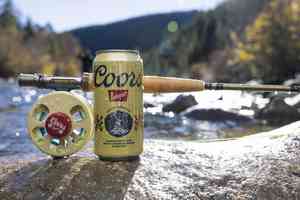

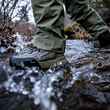

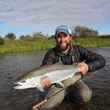
Comments
LT Ohara replied on Permalink
Home Sweet Home! Love it!
Pages